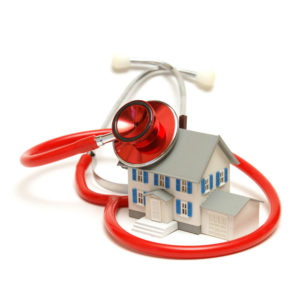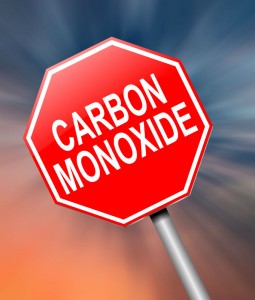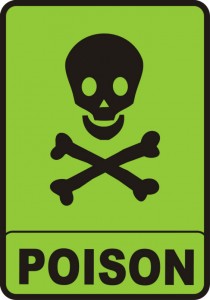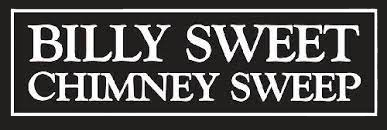by Billy Sweet | May 16, 2019 | Carbon Monoxide Poisoning
Your fireplace is the focal point of your home and the chimney is a permanent fixture. Time and regular use can lead to frustrating odors and even pollution in the home. When the chimney isn’t properly ventilated due to obstruction in the flue or a drop in efficiency, your home can be filled with particulate pollutants, harmful gases, and stagnant, stinky air. In order to prevent your chimney and fireplace from becoming a bother this summer and later when burning season returns, call in the professionals now.
What is Sick Building Syndrome (SBS)?
Sick Building Syndrome, or SBS, is an actual medical condition in which all the people in a building suffer from the same symptoms caused by the building itself. In some cases, the occurrence of symptoms in all the building’s inhabitants is the only way the illness is connected to the building, and corrected. SBS may be caused by a minor smoke problem, leading to allergies and throat irritation. Other, more serious problems such as mold or bacterial growth and even carbon monoxide poisoning can also occur.
Who is at Risk?
When it comes to SBS, everyone who resides in the building is at risk when the building itself is the problem. Symptoms are most commonly caused by inadequate ventilation, deteriorating fiberglass duct liners, chemical contaminants, biological contaminants, fan coils, traffic noise, poor lighting, and urban pollution. Like any illness, there may be some who are not affected at all. Those most at risk are young children and older adults as well as pregnant women. Some conditions can be serious and life-threatening and should be reported to the doctor immediately. You can prevent your family from becoming ill by maintaining your home properly and repairing problems right away.
Carbon Monoxide Danger
The most serious cause of SBS is carbon monoxide exposure. A slow or fast leak can lead to organ damage, organ failure, and death, and it’s a danger that can be avoided. Don’t run gas-powered tools indoors—even in the garage. Open the garage before starting your car, and have your gas-powered appliance serviced regularly to prevent CO leaks. Additionally, you should have a CO detector in your home, installed on each level, and checked monthly. Finally, pay attention to signs and symptoms which affect everyone in the home. Symptoms of CO poisoning are often confused with common cold and flu or even psychiatric or neurological problems.
Professional Care and Preventative Services
The best way to prevent Sick Building Syndrome from affecting your family is to prevent your home from becoming sick! Schedule chimney sweeps regularly so that your chimney system will be professionally cleaned from top to bottom. Scheduling inspections annually will give a professional a chance to detect hazards before they put your family at risk.
Call and schedule your appointment with Billy Sweet Chimney Sweep today at 617-469-4528.
by Billy Sweet | May 12, 2017 | The Chimney and Your Health
Your chimney’s sole purpose is to vent your fire. This protects your family from toxic gases, harmful particulate pollution, and risk of deadly fire. The Chimney Safety Institute of America (CSIA) makes it a priority to educate homeowners about chimney safety. Industry professionals understand the importance of routine chimney maintenance. In addition, how vital it is to have professional certifications and training to do so.
Chimney Sweeping
It is important to hire a certified professional to service your chimney. A CSIA Certified Chimney Sweep has the training and expertise to clean, assess, and repair a damaged chimney. However, if you take it upon yourself to clean your own chimney, you might injure yourself without realizing it.
- Respiratory Hazards.
Soot and smoke inhalation can cause respiratory distress, illnesses, and infection can be a result of soot inhalation.
- Skin Irritation.
Physical contact with creosote can cause rash, other skin issues, and infection.
- Eye Damage.
Creosote exposure to the eyes can result in chemical burns that can leave your eyes damaged and lead to light sensitivity.
This is why it is best to leave the job up to a professional. Your chimney sweep is equipped with appropriate tools, masks, and necessary equipment. These tools keep the soot and creosote away while cleaning, inspecting, or repairing the chimney system!
Chronic Respiratory Illness
The best way to decrease the amount of particulate pollution in and around your home is to only burn properly seasoned wood. When you burn wood that is too green, or items that shouldn’t be burned (like trash or clothes) it burns incompletely. Consequently, this results in microscopic particles that you inhale – maybe even constantly! So, what is the best way to prevent excessive particulate pollution and smoke inhalation? It is to maintain your chimney system by scheduling regular sweeps and inspections, so that your chimney does it’s job efficiently.
Carbon Monoxide Poisoning
Along with smoke inhalation and particulate pollution, a drop in efficiency can mean your family is slowly poisoned by carbon monoxide. Additionally, a smoky chimney also brings carbon monoxide with it, but there are other ways that it can be a health risk to your family. For instance, a crack in a flue liner can allow carbon monoxide to affect your family. Over time it can seem like a cold, but can damage organs and ultimately result in death. A faster case of carbon monoxide intrusion can seem like a swift flue, and cause unconsciousness and ultimately death. To prevent carbon monoxide intrusion in your home, make sure you have a carbon monoxide detector installed and check it monthly. This is the only way to prevent carbon monoxide exposure.
At Billy Sweet, we recommend our customers check carbon monoxide detectors often. Also, schedule service appointments annually – your safety depends on it. Schedule an appointment today to discuss how the health of your chimney can affect you!
by Billy Sweet | Mar 27, 2015 | Carbon Monoxide Poisoning
Carbon monoxide is a dangerous gas that can cause poisoning when you are exposed to it. It is a particularly dangerous threat because it is odorless, colorless and otherwise undetectable to the naked eye. When you are exposed to carbon monoxide you inhale the fumes, which prevents oxygen from reaching your organs. The most important thing you can do to protect you and your family from carbon monoxide dangers is to prevent exposure in the first place.

How Does Carbon Monoxide Poisoning Occur?
Carbon monoxide poisoning occurs in several ways, but in residential homes the most common way is through the misuse of heating appliances. In homes where wood-burning heating appliances are used, by-products can be left behind in chimneys. Soot, animal debris and flaked off masonry can all lead to dangerous toxins being release inside the home. Additionally, homes that aren’t well-ventilated can lead to carbon monoxide poisoning because there isn’t efficient air-flow while heating appliances are in use. Lastly, misuse of heating appliances can lead to poisoning, especially if inappropriate materials are being used or the operator doesn’t understand all components of the appliance.
Damaged Chimneys Can Lead To Carbon Monoxide Dangers
In homes where chimneys are older or have not been properly maintained chimneys can become blocked or rusted and this can result in carbon monoxide and other toxins being released into the air. Backdrafting, a common occurrence when chimney dampers and flues are not operating properly, can also lead to carbon monoxide poisoning.
Symptoms Of Carbon Monoxide Poisoning
If you suspect you or someone in your home is suffering from carbon monoxide poisoning, look for these common symptoms:
- Headache
- Weakness
- Dizziness
- Confusion
- Loss of vision
- Loss of consciousness
While these symptoms may seem subtle, they are life threatening. If you see any of these symptoms, remove everyone from the area and get emergency medical care immediately.
Luckily for homeowners, there are ways to prevent carbon monoxide poisoning including:
- Invest in a carbon monoxide detector that will alert you if the dangerous gas is detected.
- Never use stand-alone heating appliances like space heaters in small, enclosed areas.
- Only use wood-burning appliances in well-ventilated areas.
- Make sure you understand how to operate ALL components of your chimney before you light your first fire.
- Only burn appropriate, chemical and paint free wood in your wood-burning appliance.
- Inspect your heating equipment before use to make sure it is operating properly.
The single most important thing you can do as a homeowner is have your chimney professionally swept and inspected at least once a year. Hire a professional and experienced chimney sweeping company like Billy Sweet Chimney Sweep serving the Boston, North Shore and Portland areas to inspect, repair and if necessary, rebuild your chimney. Having an airtight chimney with a working damper and flue is the best way to prevent carbon monoxide build-up from your heating system. Our certified chimney sweeps are ready to inspect your chimneys and recommend any necessary add-ons or repairs. Contact the best in chimney sweeping to keep your home free of carbon monoxide dangers.
by Billy Sweet | Nov 15, 2014 | Carbon Monoxide
Many parts of the country have already seen snowfall this year, which only means that winter is fast approaching. With weather experts forecasting another frigid winter, everyone’s focus has turned to staying warm for the season. When leaving the house, staying warm involves bundling up and protecting your skin from the bitter air. Keeping warm indoors, however, has a different set of requirements. Most homes utilize a heating source that burns fuel like propane, wood, pellets, oil, and other biofuels. As with burning anything, there always involves a safety risk. One major safety risk everyone should learn about in carbon monoxide.

This minuscule molecule made up of one carbon atom and one oxygen atom may sound innocuous on its own, but when it shows up in large quantities, you need to worry. Carbon monoxide results anytime combustion occurs, meaning whenever something burns. Therefore, any fuel burning creates carbon monoxide, including gas ranges, car exhausts, furnaces, fireplace, and even lanterns. If this burning occurs in a closed space, the concentration of carbon monoxide quickly rises. For this reason, starting your car inside a closed garage is very dangerous. Making it even more sinister is the fact that you cannot detect the colorless, odorless, tasteless gas without the help of a special detector. Consequently, the poisoning effects of the gas on the human body can disable a person before he or she realizes what the issue could be.
You can recognize the start of carbon monoxide poisoning with signs like difficulty breathing, light headedness and nausea. Unfortunately, these symptoms reflect many other illnesses, making carbon monoxide poisoning a far thought. When inhaled, the small molecule blocks the oxygen from being distributed around the body, resulting in unconsciousness, organ failure and even death. To stop and potentially reverse the damage, the person suffering from the poisoning must have access to clean air in an open outdoor space.
The mighty power of this invisible gas makes it a threat that demands respect. Whether you use a fireplace, stove, or gas furnace this season to heat your home, recognize the dangers of carbon monoxide. Install detectors for safety – not just because it is the law – and learn the signs of poisoning. Insuring your heating appliance is functioning properly also goes a long way in preventing carbon monoxide from filling your home. Something as minor as a misfiring furnace or an obstructed chimney could mean the difference between life and death. Instead of risking poisoning, have an expert out to conduct a thorough safety inspection of your heating appliance. If you live in the Boston or North Shore area of Massachusetts or around Portland, Maine, contact Billy Sweet Chimney Sweep to speak with an expert you can trust.



